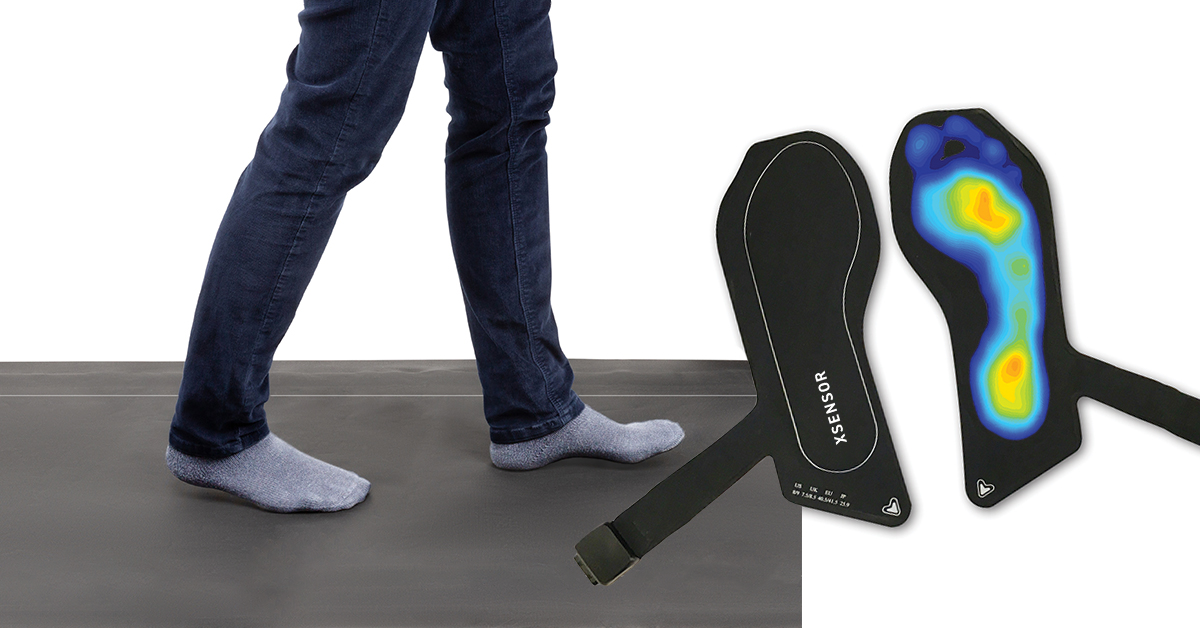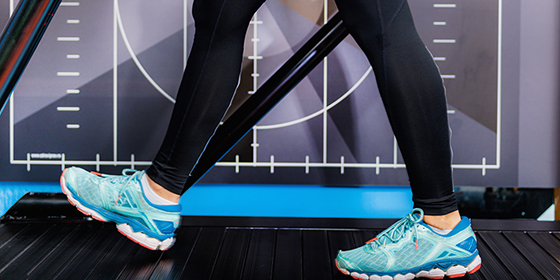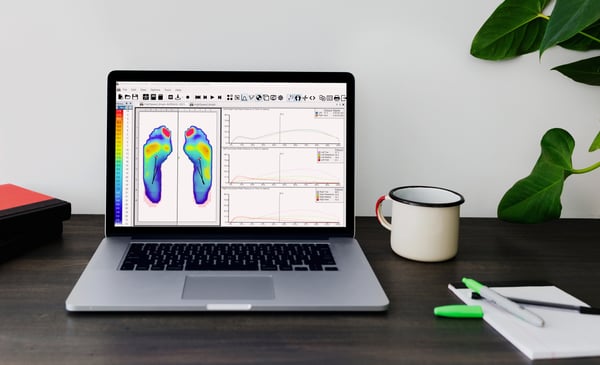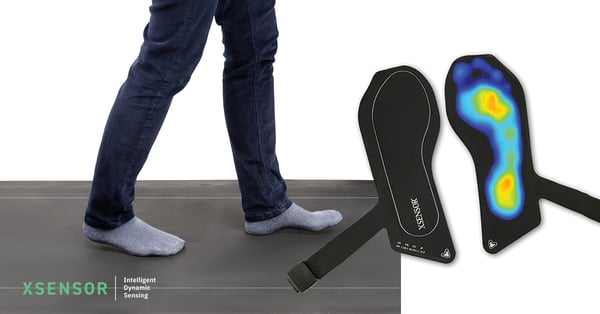
How a Foot Mapping Sensor System Can Maximize Human Performance
A system like XSENSOR’s will change a person’s movement for the better.
Human Performance and the quality of one’s gait go hand in hand. Improving performance by correcting or fine-tuning a person’s walking and running style can be done most effectively by measuring their foot pressure and gait.
Most people, athletes included, move by using their feet to propel them forward. On average, Americans take 3,500 steps a day, and healthcare professionals in the States see 8.6 million sports and recreational injuries every year.
By increasing the focus on how humans take their steps—whether walking to the grocery store or running Olympic sprints—it’s possible to improve performance, and quality of life as well, across the board.
Using a foot mapping sensor system with embedded IMU data is the most advanced (and effective) method for improving gait performance. This is of key interest for athletes, but unlike existing gait measurement and plantar pressure products on the market, foot mapping sensor systems are also applicable in real-life, everyday situations.
While existing gait measurement and plantar pressure products are not suitable for use out of the lab, they also typically lack high resolution sensors, sufficient recording speed, accurate data or impressive durability ratings, like foot mapping sensor systems—such as the one designed by XSENSOR—do.
Wondering how you can improve your patient performance by using a foot mapping sensor system? Here’s how.

What is a foot mapping sensor system?
An insole foot mapping sensor system allows clinicians to assess foot function in-shoe and optimize it. This tool can help with the discovery and treatment of a variety of issues—from poor balance and gait issues to painful foot abnormalities. Whether it’s used to fine-tune the way someone walks or to optimize the speed of an elite athlete, the right foot mapping sensor system provides smart, real-time reporting to analyze gait and maximize foot function and is the key to designing and validating orthotic devices.
Using a Foot Mapping Sensor to Maximize Human Performance
The use of a foot mapping sensor system has several key functions worth highlighting. By giving data insight into a patient’s gait and movement, their actions can be adjusted and corrected, helping to both improve performance and safeguard against injury.
- Develop baseline metrics: These are crucial data points that can be the key to rehabilitation and return to play/compete.
- Collect plantar pressure data: Measuring the pressure on and against the foot in different types of movement can reveal a lack of symmetry, overcompensation, or uncover previously unknown injuries.
- Support treatment plans: A foot mapping sensor is an excellent method to validate existing treatment plans and evaluate their efficiency, while concurrently offering real-time, real-world research for creating new treatment plans.
- Improve speed: The data analysis given by a quality foot mapping sensor can be used to adjust movement and in turn improve speed. Data shows that just 0.25 seconds separate the world’s fastest sprinters, showing that small adjustments can have significant impacts.
- Gather a better understanding of biomechanics: Everyone has different gaits and manners of movement, and foot mapping sensors allow clinicians (and even patients) to gain a better understanding of their specific movement patterns.
- Analyze natural gait: Oftentimes, gait analysis methods don’t work in situations that align with performance—such as sprints or long runs—but foot pressure mapping systems allow for performance-aligned data procurement.
How can data maximize human performance?
There are several ways to use data from a foot pressure mapping system to maximize human performance. Sensor data allows clinicians (and athletes) to draw conclusions and explore new options, including but not limited to:
- Baseline metrics
- Validation of gait interventions
- Evaluation of custom orthotic effectiveness
- Reduction of injury risk
- Improvement of comfort
- Data procurement in a variety of environments
- Wireless and mobile capabilities of data procurement, when applicable
- Improvement of footwear design and choice

Foot Mapping Sensor System Technologies
In order for a foot mapping sensor system to maximize human performance thoroughly and effectively, it must feature high-accuracy, high-technology sensing that can stand up to real-world testing out of the lab. This is where XSENSOR’s foot mapping sensor system solutions shine. With our Gait & Motion Research Insoles and Walkway & Stance Pads, XSENSOR’s technologies allow clinicians and athletic trainers to obtain quality data that paves the way for elevated human performance.
XSENSOR’s Gait & Motion Research Insoles
Capturing lab-quality detail in the field and on the track is key to optimizing athletes’ performance. XSENSOR’s Intelligent Insoles | Pro offers a premium solution, with smart, comfortable insoles that actually stand up to hard movement. XSENSOR’s Intelligent Insoles | Pro use durable sensors to evaluate gait, plantar pressure and foot function. Data collection happens in real-time, and data capture follows the athlete—instead of the other way around.
XSENSOR’s Walkway & Stance Pads
Adequately capturing plantar pressure data while standing and walking is integral to assessing patient movement and creating treatment plans that maximize their performance. Built to capture high-quality balance, pressure distribution and stance data, XSENSOR’s walkway sensors and stance pads equip clinicians to assess accurate baselines while tracking intervention effectiveness and rehabilitation progress.

Optimizing your patients’ movement in order to maximize their performance is a priority—for you and for us. Contact XSENSOR today to begin integrating our foot pressure mapping system technology into your day-to-day treatment plans.


